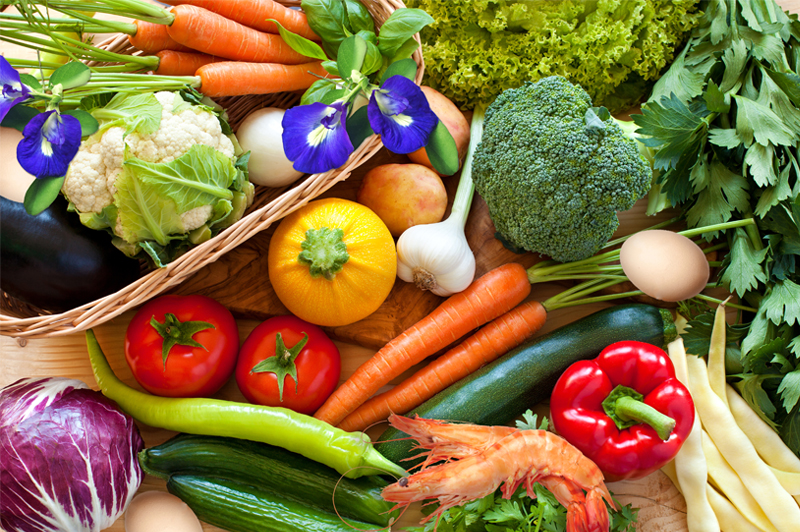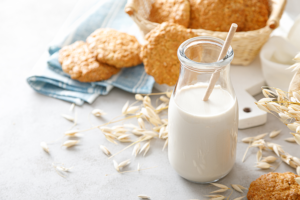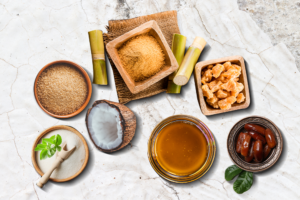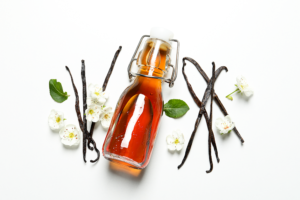Did you know that the strawberry ice cream you had a few weeks back had added colour to it? Or that the mango pulp did not entirely colour your favourite mango juice brand? Maybe you knew. A recent research Symega conducted in India across 10 Indian cities revealed that 82% of consumers are aware that packaged food and beverages contain food colouring. But have you ever wondered what kind of food colouring is used here? Are these Natural Food Colours or Artificial dyes? If natural, where do they come from? Let’s delve a bit deeper
Colour and food share an intrinsic bond. One look at a dish conveys its desirability, making food colours the most significant factor when swaying people’s perceptions of what they choose to eat or drink. The psychological impact of food colour plays a crucial role here, influencing emotions, appetite, and even taste expectations. This deep connection has contributed to the addition of food colours for centuries.
There was a time when food colours were created from nature in the kitchens. Let’s go back in time and revisit our kitchens, wherein our ancestors depended on natural sources to add a hint of colour to the food everyone thoroughly enjoyed. They used to grind fresh turmeric to add yellow hues to the curries, made a paste out of dried red chillies to make gravies brighter, added beetroots to ensure dishes had a touch of magenta, and so on. These natural methods were not just about aesthetics but also came with the advantages of natural food color—being free from synthetic additives, providing added nutritional value, and offering a safer alternative for consumption. As times progressed, eating out and packaged food became the new go-to habit that changed the world’s consumption pattern. This created a gap since these natural food colour sources were not readily available throughout the year, grew only in specific regions and climates, and, most importantly, were required in large quantities to ensure the colour stood out. These factors created the need for a commercial solution that is stable, accessible and promises an endless supply wherever and whenever needed.
The boom of rapid industrialisation and the advancement of the food tech industry contributed to the existence of synthetic food colours. It guaranteed consistent results that came with a longer shelf life. However, all things artificial have long-term consequences on consumers’ health and well-being. Recently, the natural food colour business has grown exponentially with a focus on creating stable, safe, and natural options.
Natural colours are extracted from a wide range of sources. So let’s dive in and explore some of the natural food colours available today.

Anthocyanins for RED, PURPLE and BLUE
Source: Black Grapes, Blackcurrants, Cherries, Elderberries, Red Cabbage, Strawberries
Anthocyanins are extracted from numerous flowers, fruits and vegetables. They are responsible for the colours red, purple, and blue. They are neutral in flavour and respond quickly to pH changes, turning reddest in highly acidic conditions and increasingly blue as the pH rises. Their application ranges from beverages, fruit bases, dairy, and confectionery made with sugar.
Betanin for RED and PINK
Source: Beetroot
Beetroots get their hue from the pigment called betanin. They provide magenta pink to red shades in foods and beverages. They don’t respond to pH and are one of the most popular natural colour sources, especially for Ice creams, yoghurts, cream fillings and other low-heat applications.
Chlorophylls/Chlorophyllins for GREEN
Source: Spinach, Nettles, Parsley, and Alfalfa Grass
Chlorophyll is a pigment that gives plants their green colour. In the food colour world, chlorophyll is the oil-soluble form, while chlorophyllin is the water-soluble form. Both provide green colours for different types of applications. Chlorophyllins are relatively heat and light stable as compared to chlorophylls. Chlorophyll is commonly used in products like dairy, pickles, beverages, sugar and confectionery for shades of green.
Carotenoids for YELLOW, ORANGE and RED
Source: Palm Fruit, Carrots and Fungal Sources Like Blakeslea trispora
Pigments like red, orange and yellow in plants come from carotenoids. They appear widely and abundantly in nature. They are derived from palm fruit, carrot and pumpkin. They are one of the most commonly used natural colours in beverages, dairy and savoury applications.
Curcumin for YELLOW
Source: Turmeric Roots
Curcumin is extracted from a very familiar ingredient known as turmeric. Used widely in kitchens, medicines and dyes, curcumin is known for its beautiful lemon-yellow hue. It has strong thermal stability, and applications include snacks, cakes, jellies, ice cream and candy.
Carbon Black for BLACK
Source: Carbonised Vegetable Material
Carbon black is obtained from charred vegetable matter and has high heat and light stability. It also combines well for customised blends with other natural food colours. Its applications range from ice cream, pastry, meat and confectionery applications.
Caramels for BROWNS
Source: Melanoidins
Caramel gives out golden yellow to brown shades. It is made by heat treatments of carbohydrates and has strong heat and light stability. Beverages, baked goods, ice creams and meat, employ the use of caramels for colouring.
While the above food colours are sourced from nature, artificial food colours are sourced from synthetic materials, which are sometimes inedible and harmful for consumption in the long run. Artificial food colours like FD&C Red #40, Yellow #5, Blue #1, etc., also known as Allura Red, Tartrazine, Brilliant Blue, etc., although are typically considered safe for use in food, some researchers have linked them to hyperactive behaviour in youngsters, allergies and more. Therefore, some countries also require special labelling for foods that contain such colours.
Natural colours are extracted selectively from natural sources using physical and/or chemical techniques. The resulting hues are concentrated and standardised so that food and beverage producers always get consistent colours and can count on safe outcomes that suit modern consumer needs. When comparing natural vs artificial food color, natural options are derived from plants, fruits, and other natural materials, ensuring safety and consumer trust, whereas artificial colors are synthetically produced and often face scrutiny for potential health concerns. This distinction makes natural colours the preferred choice
To know more about our range of natural food colours, get in touch with us.




